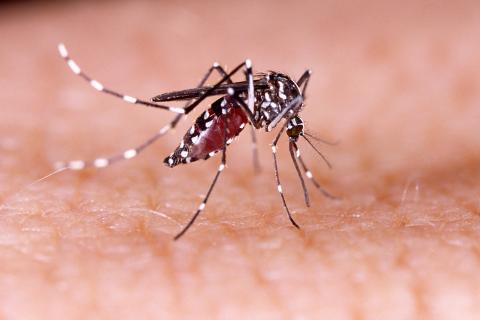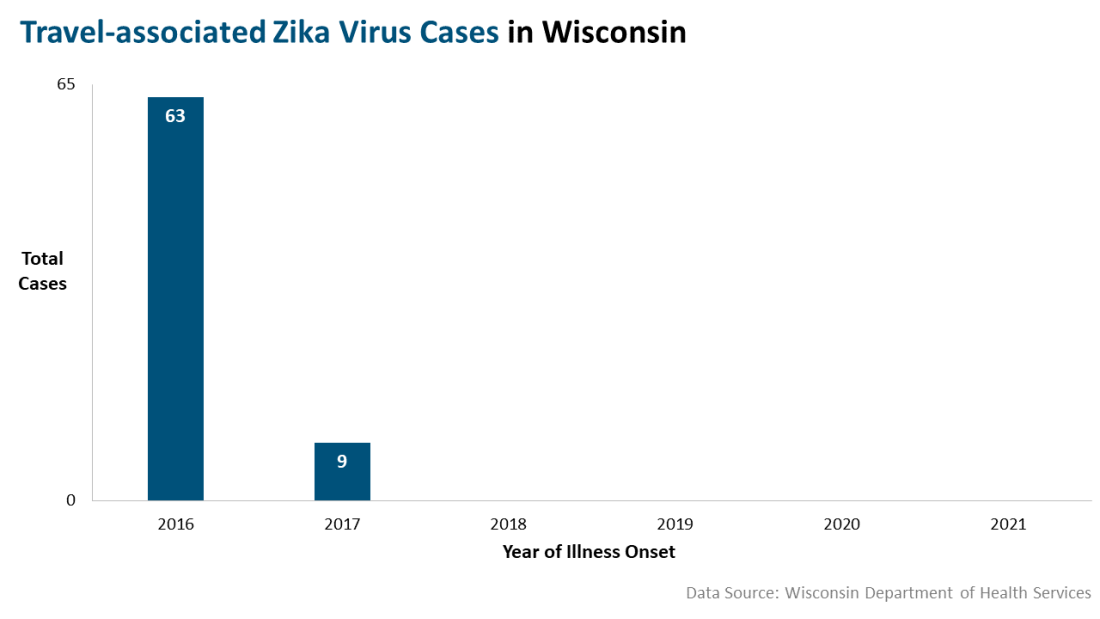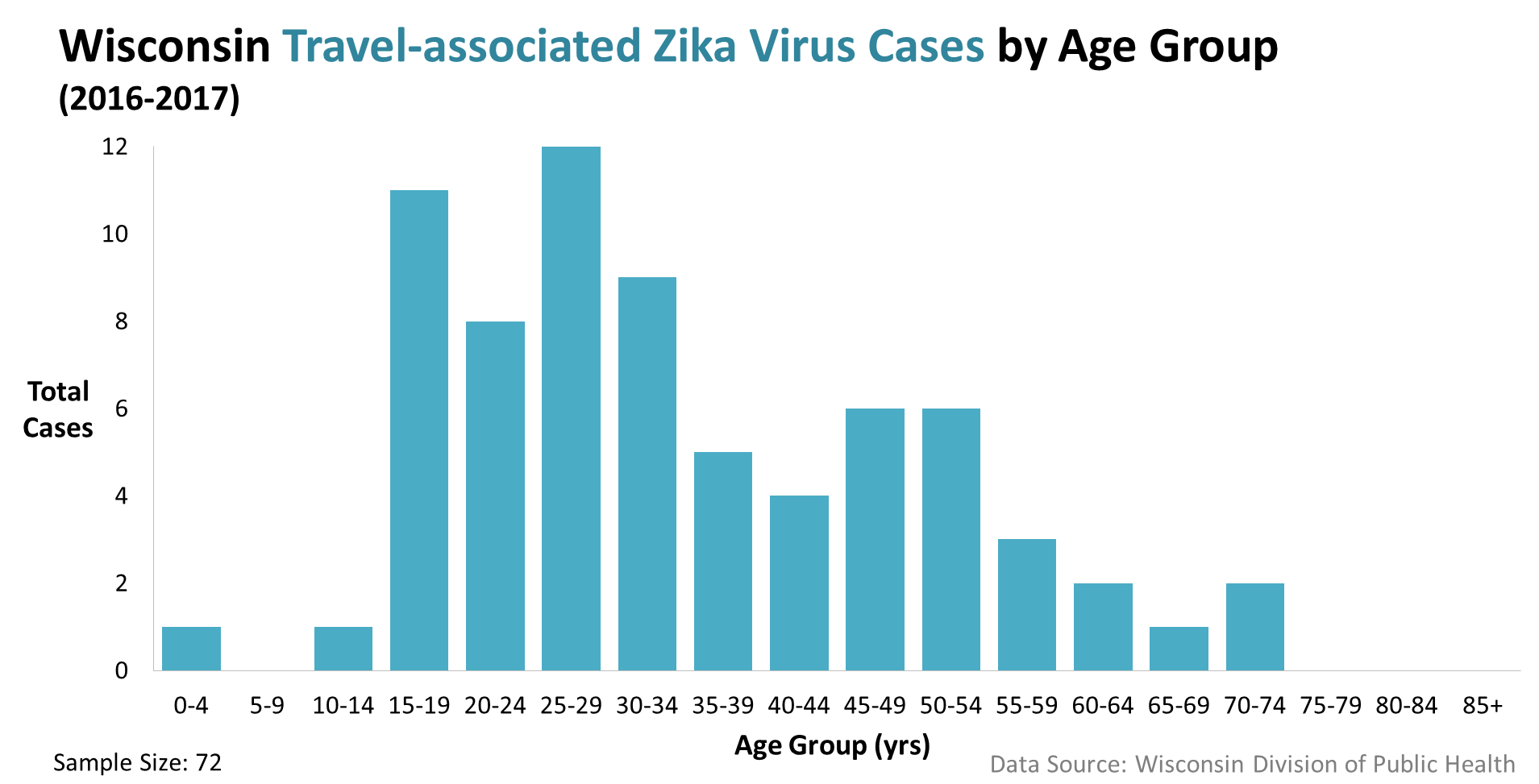Zika: Wisconsin Data
All Zika virus cases that have been reported among Wisconsin residents were associated with travel to other states or countries. This means that the cases occurred among people who traveled to locations with local spread of Zika virus, or had sexual contact with someone who traveled to locations with local spread of Zika virus, or were born to a mother who traveled to locations with local spread of Zika virus during pregnancy.
There was a large outbreak of Zika virus in the Americas during 2015-2017. The first case of Zika in a Wisconsin resident was reported in 2016. Below are data for confirmed travel-associated Zika cases in Wisconsin.
For more details on 2016 data see the 2016 Zika Data Brief, P-01846 (PDF). Additional Zika virus data is available on the Wisconsin Communicable Disease Surveillance Data dashboard.
Zika virus data
Cases reported by...
Zika virus was introduced to the Americas in late 2015 and spread rapidly throughout South America, Central America, Mexico, and the Caribbean. This resulted in a widespread Zika virus outbreak in the Americas in 2015 and 2016. The prevalence of Zika virus in these locations, however, decreased in 2017. Predictably, travel-associated Zika virus infections in Wisconsin residents peaked in 2016 with significantly fewer cases being reported in 2017.
Among Zika virus cases in Wisconsin during the 2016-2017 outbreak, 50% occurred during July and August. Many Caribbean, Central American, and South American countries experience high levels of mosquito activity throughout these months and were reporting ongoing local Zika transmission during this time period in 2016-2017. Summer in Wisconsin is also a popular time for international travel.
Note: People who had a confirmed Zika virus infection but did not have symptoms are not included in this graph, which only shows patients with symptoms.
During the 2016-2017 outbreak, the Wisconsin Department of Health Services approved fee-exempt testing for 2,010 individuals of whom 1795 (89%) were female and 221 (11%) were male. Of the people tested for Zika virus in Wisconsin during 2016-2017, 75% were pregnant women. Of the 72 total Zika cases confirmed in 2016-2017, 48 (67%) were female and 24 (33%) were male.
The distribution of Zika infections in Wisconsin during 2016-2017 is skewed toward females—67% of cases. This pattern is a reflection of the larger number of females tested due to a focus on testing pregnant women. Additionally, when symptoms are present, Zika virus infections often cause only a mild illness. As males would not have pregnancy-related concerns, they may not seek testing at the same rate as females.
During the 2016-2017 outbreak, 57% of all Wisconsin cases were confirmed among people ages 15-34. However, people of all ages can become infected with Zika virus. The age distribution of Wisconsin Zika cases reflects the demographics of the population tested for Zika virus. Since Zika virus infection during pregnancy can cause serious birth defects, proper diagnosis of Zika virus among residents who were pregnant or who were of childbearing age was a priority.
Based on reported exposures, Wisconsin travelers likely acquired Zika virus from 18 different countries outside of the United States and one additional traveler from Florida. A majority of these Zika virus infections were acquired through the bite of an infected mosquito while traveling. Patients, however, may also be infected through sexual transmission, or in utero from a maternal infection during pregnancy. Some of the Zika virus cases reported both travel to a Zika-affected area and sexual contact with a traveler to a Zika-affected area within a similar time period, and thus, the mode of transmission cannot be definitively determined.
The locations where Wisconsin residents acquired Zika virus reflect the level Zika virus activity in a specific country or area at the time of travel, and also the travel patterns among Wisconsin residents.
Data limitations
The summary data from Wisconsin travel-associated Zika virus cases during the 2016-2017 outbreak did not necessarily reflect the characteristics of the disease observed nationally. However, in looking more closely at our Wisconsin cases, we may be able to identify geographic, temporal, or other epidemiological trends specific to travel-related exposures in Wisconsin residents. This information could be of use in discussions with patients or in designing and implementing outreach and prevention activities.
Due to the nature of Zika virus infections, with about 80% of people infected experiencing no symptoms, the 2016-2017 case count was likely a significant underrepresentation of the true number of infections among Wisconsin residents.






